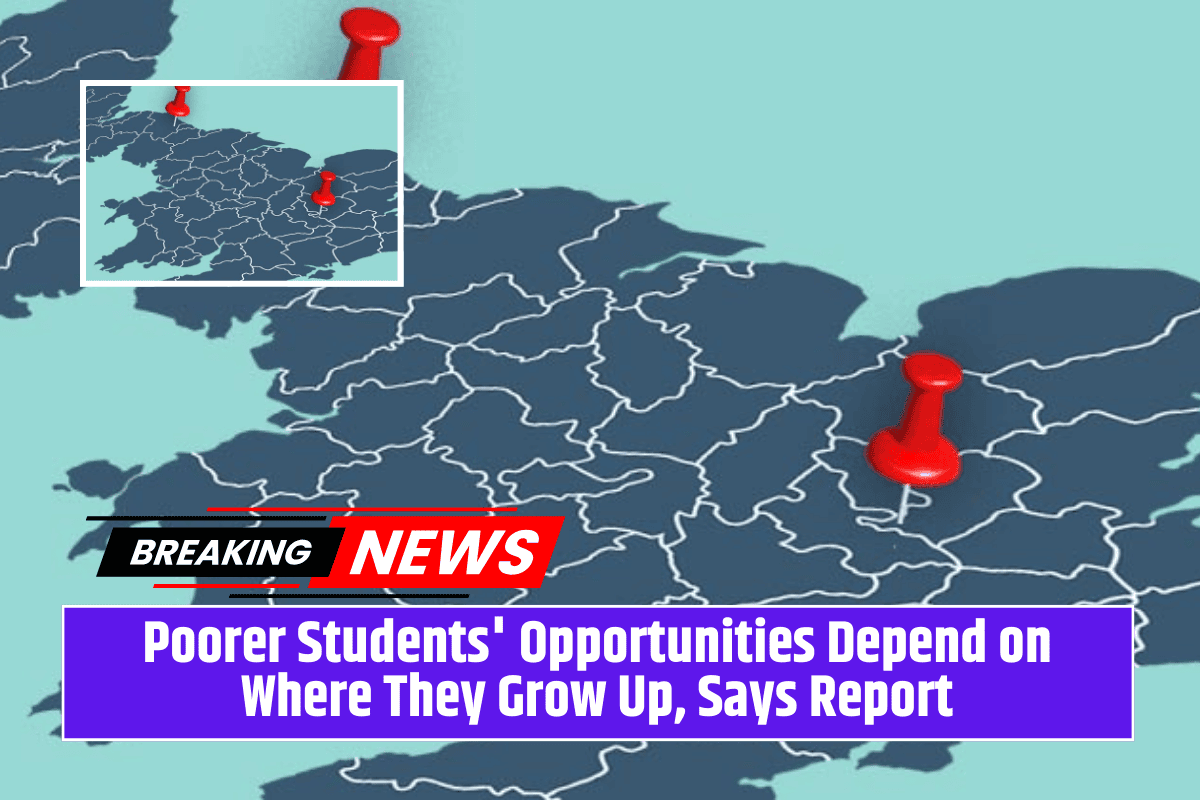A new study has revealed that where a child grows up in England can hugely affect their future. Poorer pupils in some areas have far better chances of getting a degree, a good job, and a better income than those in other places—even when they face similar challenges.
The Sutton Trust, a UK-based social mobility charity, looked at data from more than 10 million young people over the last 20 years to understand the level of “opportunity” in each part of the country. The results show massive differences between regions, even those under the same government or political party.
East Ham vs Newcastle: A Tale of Two Cities
One of the most striking examples comes from comparing East Ham in London with central Newcastle in the north east. Both areas have a similar number of students who get free school meals (a common measure of poverty). But poorer pupils in East Ham are over three times more likely to get a degree by age 22 compared to those in Newcastle.
They’re also far more likely to pass English and Maths in their GCSEs. In fact, there’s a 30 percentage point difference in pass rates between the two areas. East Ham was ranked number one in England for opportunity, while Newcastle came last.
Huge Differences Even Within the Same Region
The study also found large gaps in opportunities for poorer students living in different parts of the same region. For example, in Sevenoaks, the area represented by Labour’s shadow education secretary, 57% of free school meal pupils are not in education or work by age 28. But in nearby Bicester and Woodstock, that number drops to 30%.
This shows that even areas considered rich or well-developed can have hidden problems when it comes to supporting poor students.
London Tops, North East Struggles
Out of the top 50 areas for opportunity, 42 are in London. The north east and north west of England, as well as semi-rural towns, are overrepresented among the lowest ranked areas.
Interestingly, areas with more ethnic minority students tend to do better. Places with higher ethnic diversity scored an average rank of 114, while those with fewer minorities averaged 348—suggesting other social or cultural factors may be at play.
Political Challenges for Labour and Reform UK
Labour has made “breaking down barriers to opportunity” one of its five main missions. But the data shows the task will be difficult. Some of the worst-ranked areas for opportunity are in Labour strongholds, while many of the constituencies won by Reform UK are at the very bottom of the list.
In fact, the five seats won by Reform last year had the lowest average ranking—423 out of 543.
What Experts Are Saying
Russell Hobby, CEO of Teach First, called the findings “a deep-rooted inequality that’s wasting talent”. He urged the government to use the upcoming spending review to invest in the poorest students.
Nick Harrison, head of the Sutton Trust, said, “If the government really wants to remove barriers to opportunity, it must invest more in education and jobs in left-behind areas.”
The report urges the government to:
- Increase the pupil premium, which supports disadvantaged students
- Reform the school funding system so that high-need schools get more money
- Expand free school meals to all families on Universal Credit
- Give better financial rewards to attract top teachers to poor schools
This research clearly shows how unfair and uneven opportunity can be for students in England. Your chances of success can be shaped not just by your effort, but by your postcode. To truly level the playing field, real investment is needed in schools, teaching, and support systems across the country—especially in areas that have been left behind for too long.











